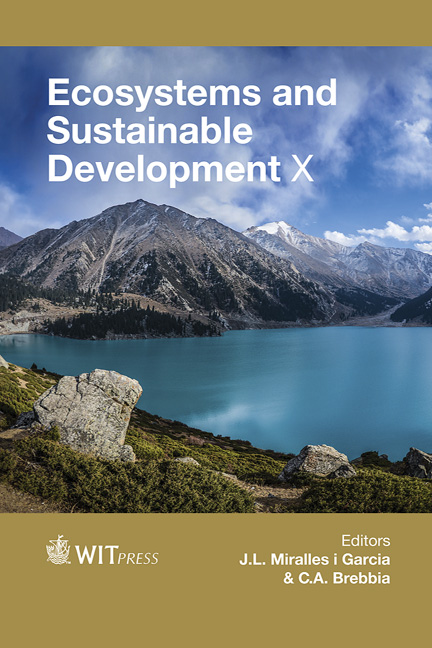Physicochemical Effects Of Long-term Deposition Of Sewage Sludge On Brazilian Oxisol
Price
Free (open access)
Transaction
Volume
192
Pages
11
Page Range
469 - 479
Published
2015
Size
521 kb
Paper DOI
10.2495/ECO150411
Copyright
WIT Press
Author(s)
M. M. Yada, F. L. C. Mingotte, W. J. de Melo, V. P. de Melo, G. M. P. de Melo, U. C. M. Proença
Abstract
The aim of this work was to evaluate the effect of doses of sewage sludge (SS) when applied for sixteen consecutive years to the Brazilian Oxisols Typic Haplothox (sandy) and Typic Eutrorthox (clayey), on the chemical characteristics of soil fertility. The experiment was carried out in a field at Jaboticabal, SP, Brazil, using experimental design in randomized blocks with 4 treatments and 5 replications. Sewage sludge was applied on soil surface and incorporated at the 0–10 cm depth with a light harrow. Sixty days after SS application, soil samples were collected at the depth 0–20 cm (10 simple samples per plot, which were mixed to obtain a composite sample). The treatments were T1 = no SS and mineral fertilization based on soil chemical analysis, T2 = 5 t ha−1 SS, T3 = 10 t ha−1 SS, T4 = 20 t ha−1 SS, dry weight basis. Except for K in the Typic Eutrothox, the amendment of the soils did not affect soil fertility that was considered as middle fertility, and also did not affect maize grain production. The lack of effect of SS on soil fertility and plant production is attributed to the water deficit in the period between the SS incorporation and the soil sampling. The doses 10 t ha−1 SS increased K in the Typic Eutrorthox, probably due to K extraction from the soil organic matter. In all the treatments, the bases saturation was below the recommended for maize, that is 70%. Maize fertilized with 5 t ha−1 sewage sludge, dry weight basis, plus K, produced the same that the mineral fertilization.
Keywords
biosolid, soil fertility, maize, pollution





